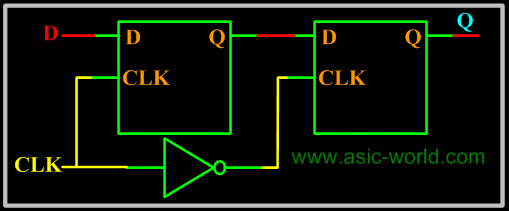Post by Mighty Mouse on Feb 2nd, 2005, 8:42pm
I found a description of the difference at http://www.asic-world.com/digital/questions.html.
Quote:
|
They then go on to say that a flip-flop can be built from latches as follows

In this figure it seems the essential difference is a extra half clock cycle delay in the output.
But then in
http://dept-info.labri.u-bordeaux.fr/~strandh/Teaching/AMP/Common/Strandh-Tutorial/flip-flops.html they define the difference as follows ...
Quote:
|
This is the definition I am used to.
So it seems like the terms latch and flip-flop are not used consistently by engineers.